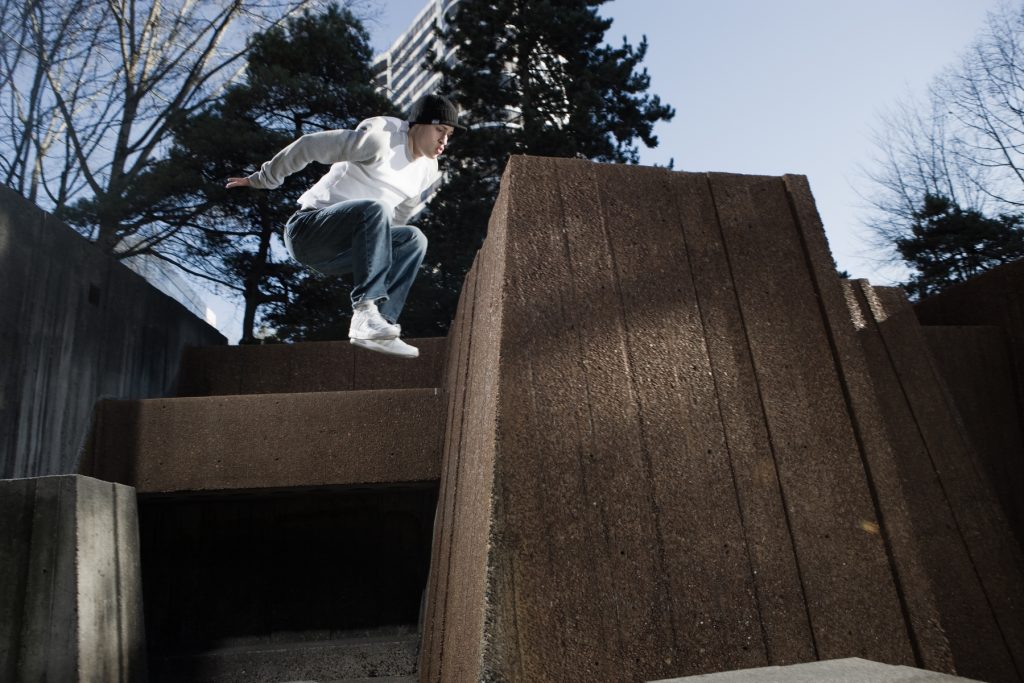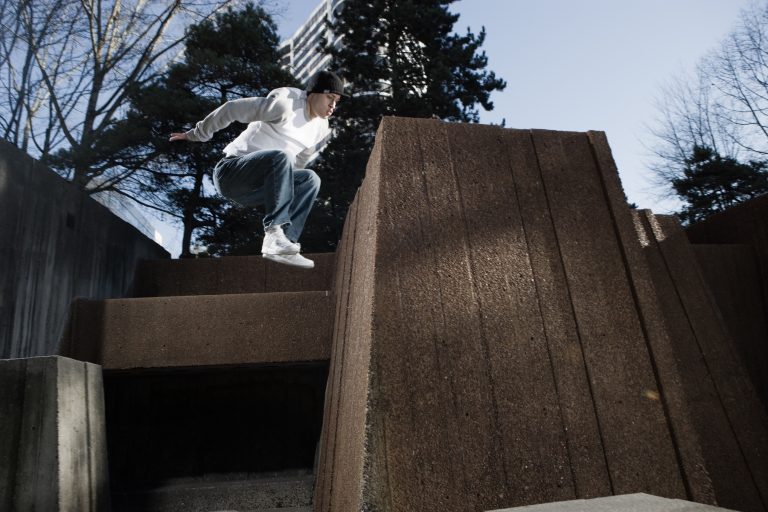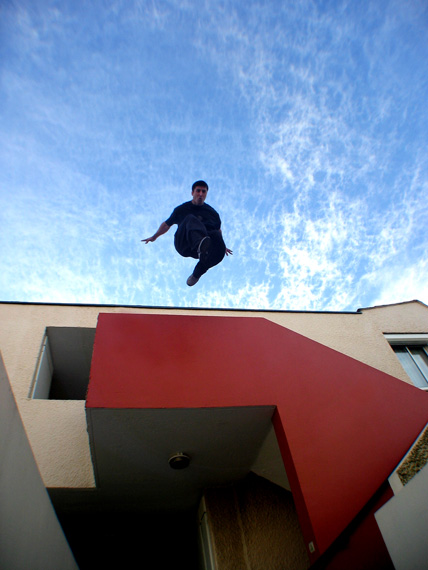The decade is coming to a close, and it has been one heck of a ride for Parkour! The community, landscape, industry, and even the discipline itself has evolved in exciting ways that no one expected. In fact, I think it’s more than safe to say that Parkour has evolved more in the last 10 years than it had in the previous 24.*
I got to thinking about all the changes, and I decided someone needed to make a list of the top 10 Parkour stories of the decade. Being a dedicated Traceur since 2006, having worked with David Belle, having built a Parkour gym, having built a Parkour shoe company, and now being the head of Parkour.com, I felt I was as good of a person as any to sit down and figure it out (or at least chime in and share my view). The result is what I’ll be publishing in a 10-part blog series called “The Top 10 Parkour Stories of the 2010s”. This is the introductory article that gives some background to those articles and how I selected the top 10.

How did I choose the top 10?
Choosing the top ten was rough, but ranking them was the real challenge. I listed the top stories that I felt really resonated throughout the Parkour world over the last 10 years (there were more than 10). Then I devised 3 criteria through which to judge the stories by which I could give each story a score from 1 to 10 in those criteria. I then gave each story a score, I balanced those scores through various methods in order to root out as much of my emotional bias as possible, and then I added up the scores. The highest score was the #1 story followed by the following 9. The result is a list of 10 stories that I think is both powerful and fair in its ranking.
What were the 3 criteria?
I think Traceurs worldwide will find the stories compelling and on point, but I don’t expect everyone to agree with the final ranking order. However, the biggest disagreements may track back to the criteria I chose, so I’ll share the 3 metrics and how I approached scoring each one.
#1. How surprising and/or exciting was the story?
This was a raw emotional metric that I felt was super important. Was the story expected or did it come out of nowhere? Said another way, was the story widely predicted like, “This will happen, it’s just a matter of time,” or was it just like, “*POW* where did that come from?!” I felt that stories that were surprising and unexpected carried more weight than ones that we all saw coming.
Also, did it move Traceurs emotionally? Did it make our jaws fall to the floor and did it make Traceurs excited to train? Or was it just like, “Meh, that’s kind of cool, but whatever”? I believe that the more exciting a story is the more resonance it has, so anything that I felt motivated and inspired Traceurs worldwide got a better score than stories that didn’t.
#2. How much did this event change how the outside world saw Parkour?
Parkour doesn’t exist in a vacuum. It exists in a world with other sports, fans communities, and cultures. Because of this, the future of Parkour lies somewhat in its ability to reach outside the community. That’s what a) Grows the community by bringing in new people, and b) Provides additional financial means which feed the Parkour community in various ways. As such I felt that stories that reached beyond the Parkour community were more important than ones that stayed within.
Think about it this way: if something affected the Parkour world in a powerful way BUT was irrelevant to the outside world then it was powerful for sure. But if something affected the Parkour world in a powerful way AND reached beyond the community to impact culture, business, and people not already in the PKFR community then doesn’t it make sense that it’s a bigger story? My answer was a resounding yes.
#3. How much did this event change Parkour and its community, method, and industry?
The last metric I chose focused on the change to Parkour and the Parkour community itself. If a story changed how Traceurs thought, interacted, communicated and/or trained, then I considered it a more powerful story than ones that didn’t change anything. In that same vein, some developments in the Parkour world have persisted and have continued to influence the PKFR scene for years, while other stories were powerful but were ultimately short lived and didn’t change much long term. I felt that stories with a larger impact on the PKFR world and/or a longer term impact were more important than those that didn’t.
Stories? Hmm… Clarifying the List
I’ll close with this. To clarify, my title is somewhat inaccurate in that these 10 “stories” won’t all be “stories.” A couple of them were/are single or grouped events that reverberated throughout the PKFR scene. But most of them are more like “developments” where certain broad ideas and events ushered in huge changes in the PKFR scene. Looking back on them they are stories, but at the time they have been interpreted differently.
One thing is for certain – the Parkour world is radically different than it was 10 years ago. This 10-part series is my attempt to outline the 10 biggest stories (plus 4 honorable mentions) that explain that change. When it’s done, I’d love to hear your thoughts on the decade, where Parkour has come, and where it is going in the 20’s.
*The oldest writing by David Belle about Parkour dates “Parkour” to 1986.
If you like this article, leave a comment! Maybe you’d like to guess the top stories before I unveil them! List your comments and ideas below and start the discussion 🙂


